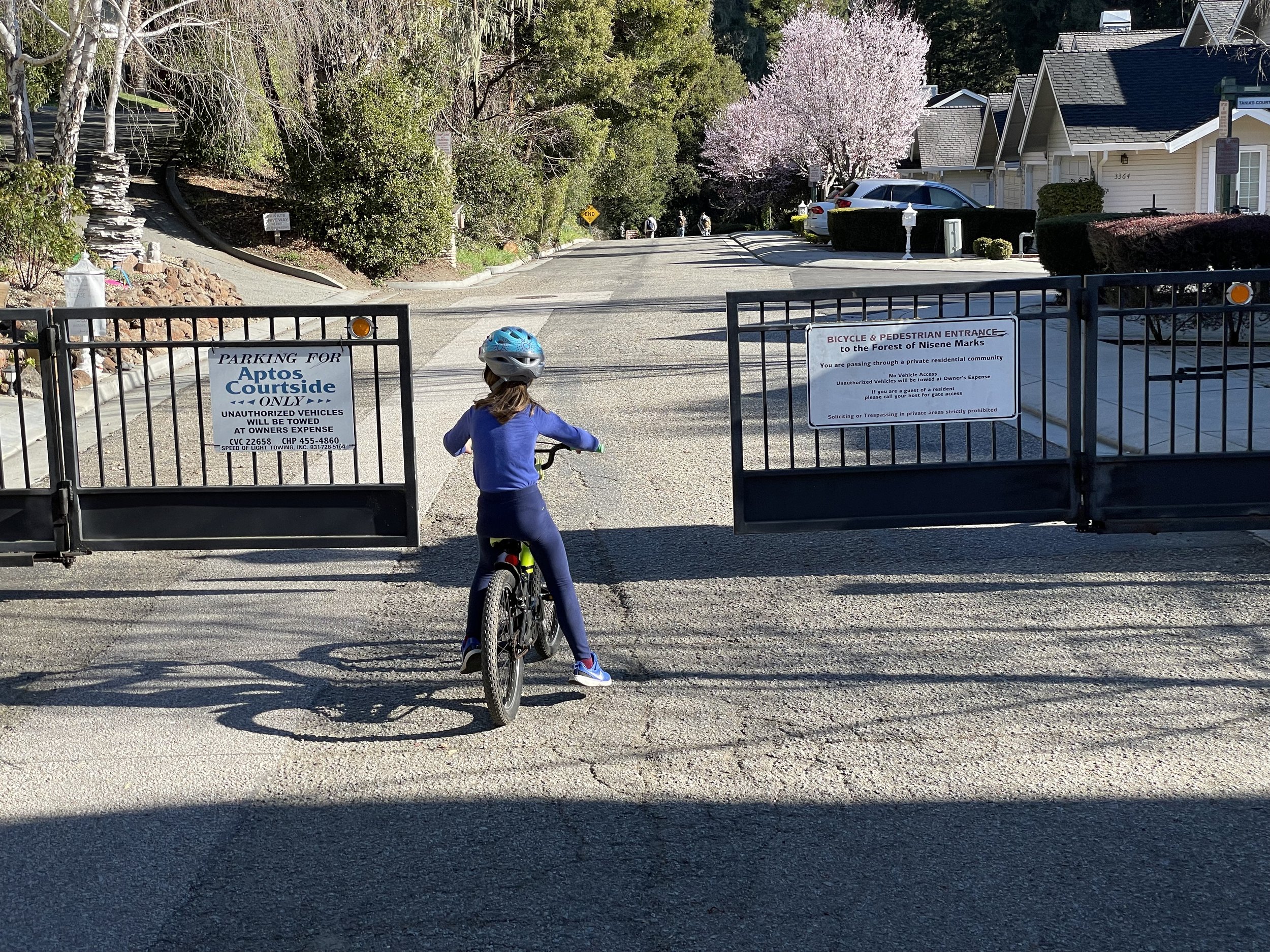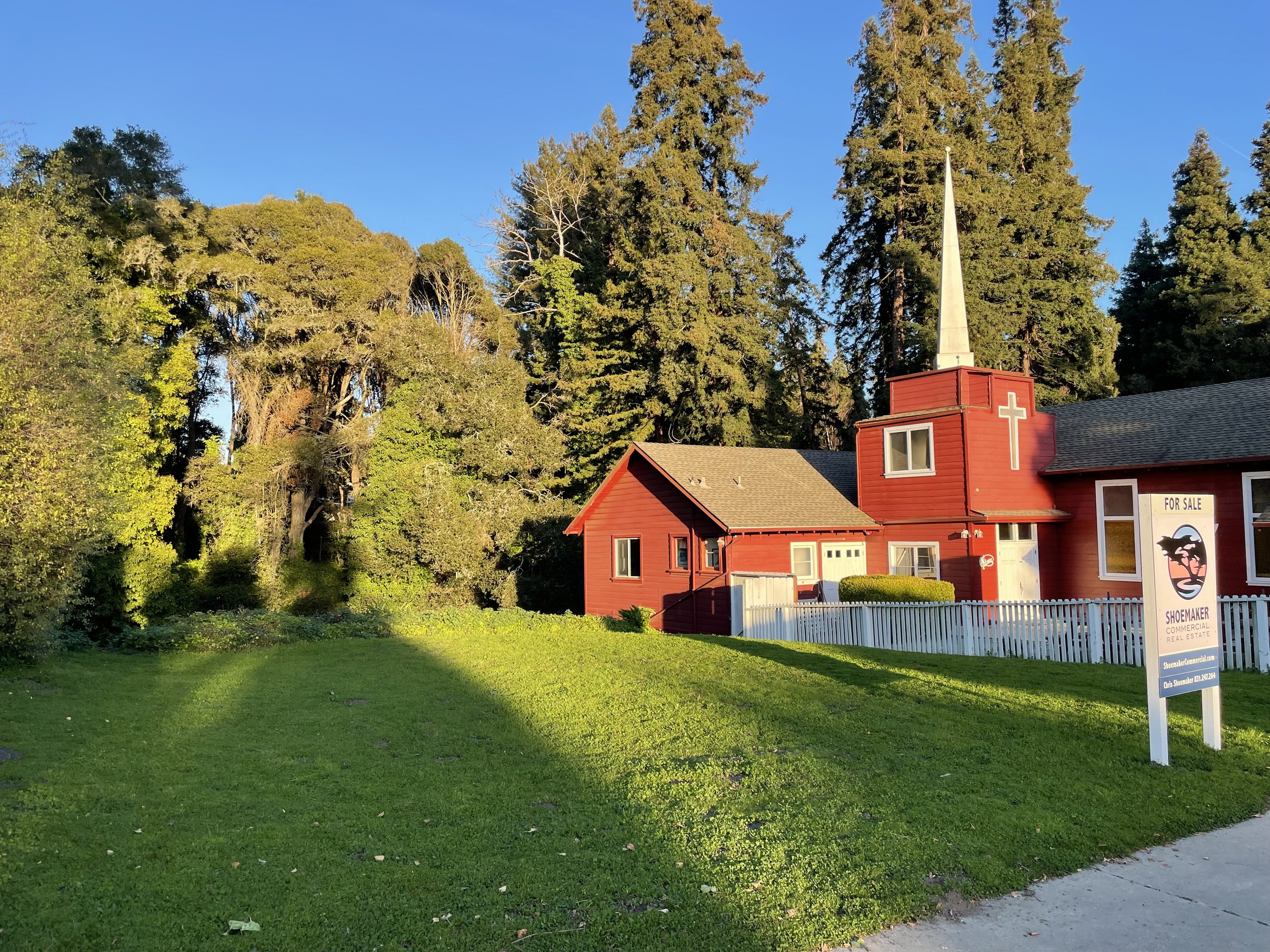Your home is a vehicle
It’s true. Maybe not for those that live in umm motor homes, but for everyone that owns their home - real estate is a vehicle for building wealth.
Many people choose to not own their home, and many people simply haven’t purchased their first home yet. But sadly, a growing number of people, especially in Santa Cruz County and other local areas, are finding home ownership perpetually out of reach.
For me, as a privileged & well compensated Knowledge Worker, I’ve found the doors wide open for building wealth. Thanks in large part to my dad, who built his wealth as a public High School teacher with a knack for personal financial management and a distaste for traditional shows of wealth, I have essentially achieved my dream life. That’s not - by any means! - to say that my life is easy. But I have definitely been able to casually stroll through open doors to manifest the life of my dreams…
… while others live life in a nightmare state.
There is something deeply wrong with this, and something deeply disturbing to me.
Occupy Central HongKong, Nov 2011
When I visited the Hong Kong area on a business trip in 2011, I saw firsthand the struggles for self governance and heard about the local illusion of democracy.
A democratic candidate poster in Hong Kong, Nov 2011
Over a decade later,
things don’t seem to have gotten any better for the people of Hong Kong.
Here in America, land of the free & home of the brave, countless people live bravely with no home and freely on land they don’t own.
I often hear people refer to “the homeless problem” as someone might refer to a pest infestation. This has long disturbed me. There is most definitely a problem, but it is most definitely not on the shoulders of those without a home. The burden is on society, and the people sleeping throughout our unseen nooks are not criminals - they are members of our community. Try your best to ignore them and the root of the problem will only grow.
We cannot solve our problems by ignoring the people suffering them.
Why am I writing about this?
And what the heck does this have to do with parks or transportation?
It’s not only because our unhoused population depends heavily on the unseen nooks in our parks & transportation corridors for basic survival needs. It’s because parks & transportation are the connective tissue of community, and building a healthy community in Aptos is the heart of NRG’s Mission.
The “homeless problem” is well understood, and there are numerous organizations & services working to address this issue from numerous angles. Yet our community also faces a related problem - crisis, in fact - with equally insufficient means to resolve:
Housing Affordability
We refer to this crisis by the “glass half full” term, but the glass is much less than half full. The deeper issue is not that housing is unaffordable, it is that housing is unobtainable.
You see, someone that rents their home may have shelter but they do not “have a house.” They are beholden to the tides that rise & fall beyond their control. It’s important to understand that this will not be viewed as “a problem” by the wealthy class. This will without doubt be perceived as a mere fact of reality, when the reality is that this is by design.
We are essentially still living in a feudal system that upholds segregation.
The traditional approach to increase affordable housing stock seems to be “more of the same.” Build the ghetto over there, set up the slum in the corner here. This sort of segregated development strategy is insufficient to address the underlying societal & systemic issues at root cause. It is a mere Band-AID that does little to heal the gaping wound.
A healthy community depends on the integration, collaboration, and cooperation of its diverse members.
A healthy community is not governed by NIMBYs.
MidPen Housing is a local nonprofit developer, owner, and manager of affordable housing. Their vision for Aptos’ historic Castro House included renovation as a new community center for an affordable housing development, Aptos Blue.
Not only did this site include respectful repurposing of the historic property and accommodations for low, very-low, and extremely-low income residents, but it was also well done - with a central park featuring open space & children’s playground, an excellent location walking distance to various amenities, and positioned along Aptos Rancho Rd, which is owned by State Parks and offers pedestrian & bicycle access to The Forest of Nisene Marks State Park.
Did the Aptos community welcome its future neighbors? This was before my time here, but the answer appears to have been a resounding “no.”
Aptos Courtside carved out its nook at the Aptos Rancho Rd entrance to Nisene Marks just prior to the turn of the millennium. This is a great townhome community full of great people, some of whom I’ve met. But back in 2013, they weren’t very excited about the prospect of their future neighbors.
Funny that this person should mention Cabrini-Green, because I called Chicago home for a few pivotal years of my life and during that time I learned many very important things about diversity and healthy community building.
Chicago’s Cabrini-Green neighborhood in July 2012
Cabrini-Green was an infamous example of the failures of segregated “housing projects.” The concerned residents of Aptos Courtside could perhaps be forgiven today.
In 1995, the Chicago Housing Authority (CHA) began tearing down the dilapidated mid- and high-rise buildings of Cabrini-Green, with the last demolished in 2011. Today, only the original, two-story rowhouses remain. The area has seen major redevelopment due to its proximity to downtown, resulting in a combination of upscale high-rises and townhouses, with some units being CHA-owned, creating a mixed-income neighborhood.
I can only imagine that MidPen was aware of the nationwide reassessment of traditional housing projects during planning for Aptos Blue. Personally, based on what I see today, I think they did a bang-up job.
Where are the gangs?
It’s been nine years since the Aptos community wrestled with the prospect of welcoming new members with low, very-low, and extremely-low income levels.
As far as I can tell, the gangs are no where to be found in Aptos.
A healthy community is not created by opposing change and excluding newcomers.
A healthy community is cultivated by steering change in a positive & inclusive way.
In the wake of the destructive 2020 CZU fire, and exacerbated by simultaneous crises in housing affordability & wealth inequality, policy makers in Santa Cruz County have been opening the doors on Tiny Homes and ADUs.
I’ve been looking into these new options, not only for the possibility of helping my in-laws relocate here from the East Coast, but also due to the intersection of NRG’s focus areas.
It’s hard enough to make a buck here, let alone a million bucks.
I mean, sure, if you have a high-paying Tech salary there are plenty of doors open to you. But otherwise, you may find your options growing increasingly smaller. This is a growing problem outside of NRG’s scope. Our focus is on healthy community building through parks & transportation, as these are the connective tissue of a healthy community. Aptos has many small parcels unfit for traditional home construction, and an even larger number of parcels perfectly fit for additional housing stock via ADUs & Tiny Homes.
This approach to affordable housing is not only sustainable & equitable, it is also socially responsible. Sweeping low-income community members into a segregated “housing project” is not good for those individuals or for the community. Diversity & inclusion relies fundamentally on interaction & collaboration between people of different backgrounds, perspectives, and socioeconomic positions.
I had an idea recently, along these lines, worth about 2¢.
Similar to a conservation easement, I started thinking about the concept of an “affordability easement.” Maybe this sort of thing already exists, but the concept has nothing to do with new construction or ADUs or anything like that.
In a nutshell, the idea of an affordability easement is similar to a conservation easement except that instead of restricting development for conservation purposes, an affordability easement would restrict future sale proceeds for affordability purposes.
Maybe someone smarter than me has already thought of this, or thought of why it wouldn’t work. Maybe it’s a crazy idea. Or maybe it’s such a crazy idea that it just might work…









